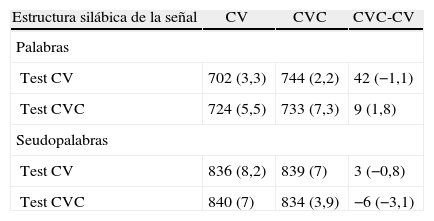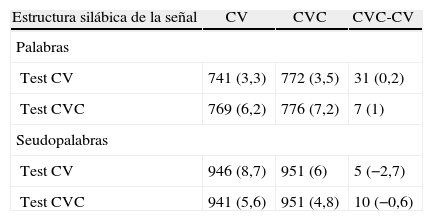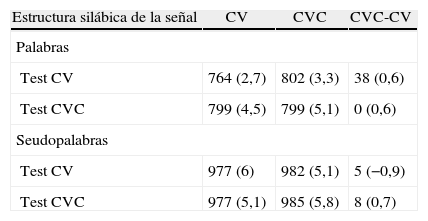La sílaba se considera una unidad de acceso en el reconocimiento visual de palabras. Se ha obtenido evidencia del papel de la sílaba manipulando la frecuencia silábica (Carreiras, Alvarez y de Vega, 1993) y mediante el priming silábico (junos-JUNIO se reconoce más rápido que juntu-JUNIO; Carreiras y Perea, 2002). Este trabajo examina si los efectos de priming silábico se encuentran modulados por la estructura de la sílaba inicial. Tres experimentos de decisión léxica con asincronías señal-test entre los 64ms y los 320ms mostraron un claro efecto de priming silábico para palabras con estructura CV en la sílaba inicial, pero no cuando la sílaba inicial tenía una estructura CVC. Dicho hallazgo tiene importantes implicaciones para los modelos de reconocimiento visual de palabras que incluyen la sílaba como unidad mediadora entre el nivel de letras y el nivel léxico.
The syllable can be considered as an access unit in the recognition of visually presented words. Most of the evidence comes from experiments that have manipulated syllable frequency (Carreiras, Alvarez, & de Vega, 1993) and from syllable priming experiments (i.e., faster identification times for junos-JUNIO than for juntu-JUNIO; Carreiras & Perea, 2002). In the present study we examined whether the magnitude of syllable priming is modulated by the syllabic structure of a word's initial syllable. We conducted three priming experiments, with stimulus-onset asynchronies ranging from 64 to 320 ms, using three lexical decision tasks. The results showed a syllable priming effect for words with a CV syllabic structure in the initial syllable, but not for words with a CVC syllable structure in the initial syllable. This finding has important implications for models of visual word recognition that employ the syllable as a mediating unit between the letter and the word levels.
Artículo
Comprando el artículo el PDF del mismo podrá ser descargado
Precio 19,34 €
Comprar ahora










